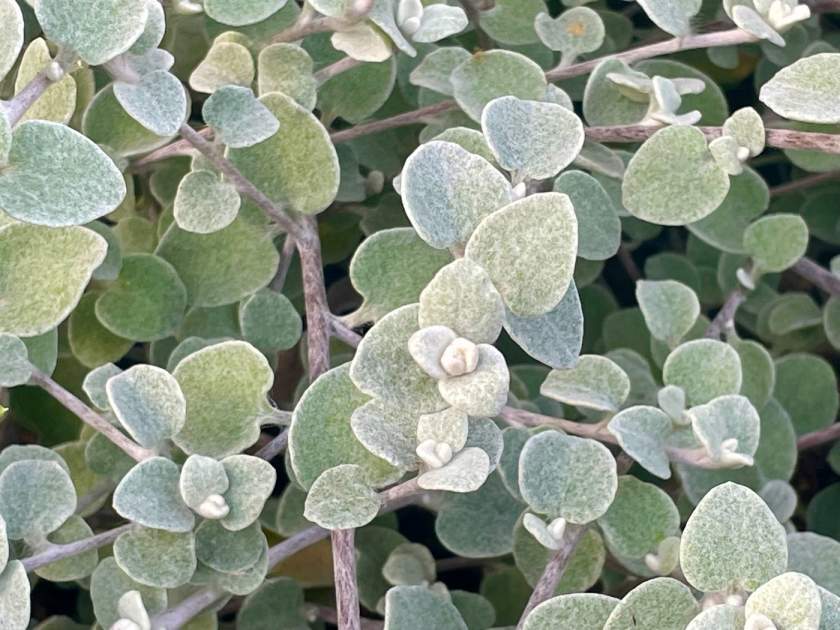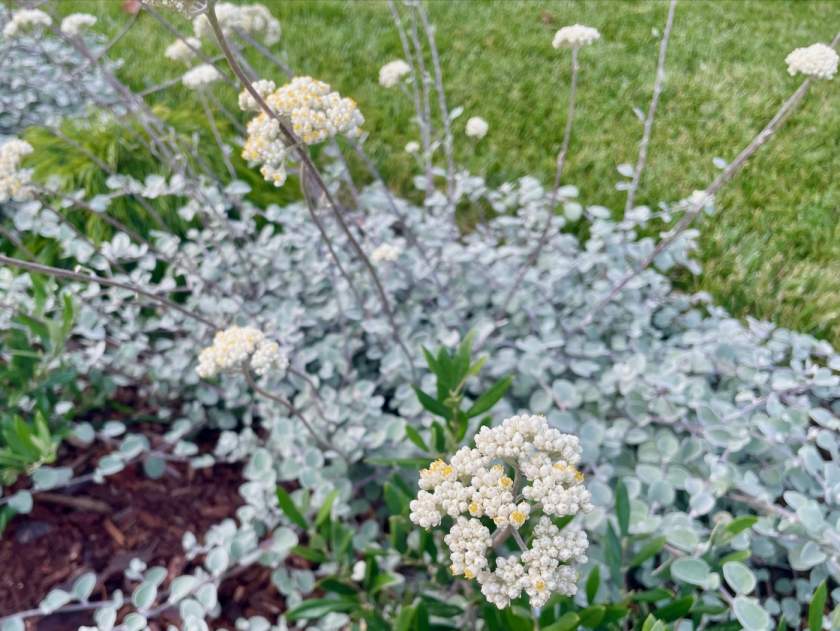The Versatile Licorice Plant: Helichrysum petiolare
Helichrysum petiolare, commonly known as Licorice Plant, Liquorice Plant, Silver Licorice, or Helichrysum petiolatum, is a fascinating evergreen shrub that captivates with its soft and densely-felted foliage, emitting a slight licorice fragrance. This trailing subshrub belongs to the family Asteraceae and is native to South Africa, where it is locally known as Imphepho.
With its plush, velvety silver leaves and insignificant white blooms, this delightful plant serves multiple purposes, ranging from ground cover to container and hanging basket adornment, as well as underplanting roses or shrubs in borders. Its versatility and attractive appearance make it a favorite among gardeners looking for low-maintenance, drought-tolerant additions to their landscapes.
Characteristics: The Licorice Plant is an evergreen subshrub that typically grows to about 45 cm (18 in) in height and spreads up to 150 cm (59 in) in width. Its trailing stems are densely covered with round, plush, and velvety silver leaves, creating an eye-catching display. While the small white flowers that adorn the plant are rather inconspicuous, it is the luxurious foliage that steals the show. The leaves emit a faint licorice aroma, which adds to the overall appeal of this remarkable plant. It is essential to note that despite its common name, Helichrysum petiolare is not closely related to the true licorice plant, Glycyrrhiza glabra.
Cultivation of Helichrysum petiolare:
Cultivating Helichrysum petiolare is relatively straightforward, but providing the right conditions will ensure its optimal growth and development.
Sunlight: The Licorice Plant thrives in full sun to partial shade. It performs best when exposed to ample sunlight, but it can tolerate partial shade if necessary.
Watering: This evergreen subshrub is relatively drought-tolerant once established, making it suitable for water-wise gardening. Allow the soil to dry out slightly between waterings to prevent overwatering and root rot.
Soil: Helichrysum petiolare prefers well-drained soils with a dry to medium moisture level. It can tolerate poor soils, but excellent drainage is essential for its health and vigor.
Pest and Disease: Licorice Plant is relatively resistant to pests and diseases, but like any plant, it may encounter occasional issues. Inspect the plant regularly for aphids, caterpillars, or scale insects, and treat them promptly with appropriate measures if needed. Ensuring good air circulation around the plant will help prevent common fungal diseases such as powdery mildew.
Propagation: The Licorice Plant can be propagated through semi-hardwood cuttings. Take 6 to 8-inch long cuttings from the tip of the plant during the active growing season. Remove any leaves from the lower half of the cutting and dip the cut end into a rooting hormone. Plant the cuttings in well-draining soil, maintain high humidity, and provide bright, indirect light until roots develop.
Uses:
The Licorice Plant serves as an exceptional groundcover, creating a lush, silver carpet that enhances the beauty of any garden bed or landscape. Its trailing habit makes it perfect for hanging baskets and containers, where its velvety leaves spill gracefully over the edges. Moreover, it can be used to soften hard corners or underplant roses and shrubs, providing a charming backdrop for other perennials in beds and borders. The Licorice Plant also finds a place in rock gardens, adding texture and interest to these unique landscapes.
Medicinal Uses: In addition to its ornamental value, Helichrysum petiolare holds traditional medicinal uses in Southern Africa, where it is known as imphepho. The leaves and twigs are boiled and prepared as a soothing tea for coughs and fever. Furthermore, they are applied to wounds to prevent infection, and their ceremonial burning produces traditional incense.
The plant has been researched for its antimicrobial, antioxidant, and anti-inflammatory properties, making it a valuable component of traditional African medicine. While the efficacy of imphepho as a treatment for tuberculosis remains uncertain, its common usage in the region suggests potential benefits for various ailments.
The Licorice Plant, with its soft and velvety foliage, presents an excellent addition to any garden or landscape. Its low-maintenance nature, coupled with its versatility and subtle licorice fragrance, makes it an attractive choice for both novice and experienced gardeners alike. Whether used as a groundcover, a cascading feature in hanging baskets, or as an underplanting for other ornamental plants, Helichrysum petiolare offers a delightful and charming presence to enrich any outdoor space. Additionally, its traditional medicinal uses in Southern Africa add an intriguing cultural aspect to this exceptional plant.






